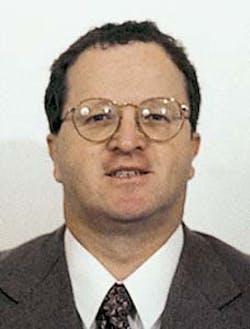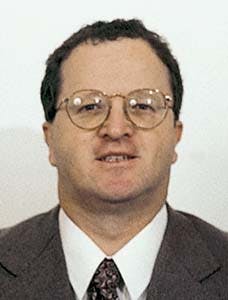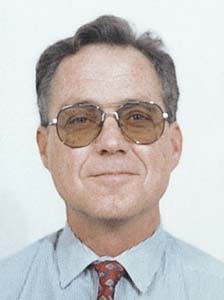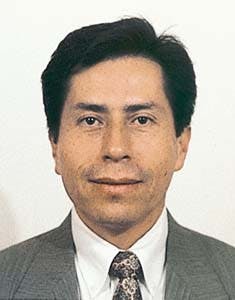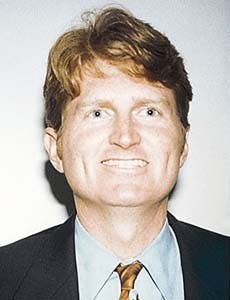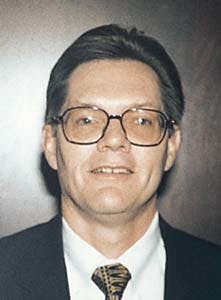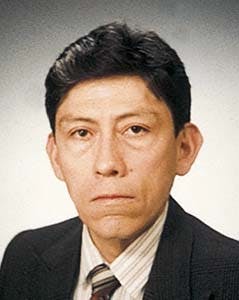Managing Nontechnical Risks Associated With Seismic Operations In The Tropical Rain Forests Of Ecuador
Amoco Ecuador BV signed a Participation Contract with the government of Ecuador to explore for hydrocarbons on Block 18, a concession of about 108,000 hectares (about 267,000 acres) in the north central Oriente (see map).
The Participation Contract specified that Amoco would acquire at least 325 km of 2D seismic data within the block.
The tropical rain forests of the Oriente constitute a biologically diverse and ecologically sensitive area. In addition, these forests are home to about 100,000 indigenous people belonging to seven indigenous groups: the Achuara, Shuara, Huaorani, Cofane, Quichua, Siona, and Secoya. Block 18 is inhabited by about 1,600 Quichua and 400 colonists. The Quichua rely on the rain forest for their food, shelter, medicine, clothing, and cultural identity.
In the 1990s, oil development in the Oriente has evoked controversy and has been the focus of Ecuadorian and international environmental organizations, indigenous groups and organizations, government, and industry.l-l0
Some environmental organizations and indigenous groups have vigorously protested hydrocarbon activities in the rain forests of the Oriente. Petroleum activities have been blamed for deforestation and the resultant loss of biodiversity for two reasons: First, small amounts of deforestation result from the clearing of seismic lines, wellpads, pipelines, flow lines, road rights-of-way, and production facilities. Second, and more importantly, access roads cut through the forest provide migration corridors for colonization and large-scale deforestation.
Consequently, petroleum companies operating in the Oriente are challenged to address the following issues: biodiversity, indigenous people, colonization, deforestation, and public perception.
Integrated environmental, sociocultural strategy
Prior to being awarded its Participation Contract, Amoco had performed an extensive desktop study supported by several reconnaissance field trips to Ecuador.
Based on the knowledge of the environmental and sociocultural issues in the Oriente obtained from this environmental scoping study, Amoco's environmental team formulated an environmental and sociocultural strategy.
The goal of this strategy was to minimize the environmental and sociocultural impacts and manage the public perception risks associated with rain forest seismic operations in Ecuador.
The foundation of this strategy was a commitment to operate in an environmentally responsible manner and with respect for the cultures and traditions of the indigenous people and colonists living in the area where Amoco and its contractors would be working.
In addition, Amoco adopted an open-door communications policy-open communications with local communities; environmental and indigenous organizations; and local, provincial, and central governments.
Management commitment
A critical element of the strategy was a commitment from Amoco's top management to operate in an environmentally and socially responsible manner.
Environment, health and safety were fully integrated into business planning and the resources (people and money) were provided to successfully implement the strategy.
Strategic communications program
A strategic communications program was formulated and implemented to support the open communication policy.
The program defined primary audiences, identified the key news media, defined a strategy for addressing the concerns of environmental groups and other NGOs, and identified opportunities for philanthropy consistent with Amoco's values and goals.
An Amoco Foundation grant was awarded to the Jatun Sacha Foundation, a private nonprofit Ecuadorian organization whose mission is to promote biological research, environmental education, and conservation of tropical forest habitats throughout Ecuador.
Also, Amoco's environmental team met with environmental groups and scientists in the U.S. and Ecuador to discuss Amoco's planned seismic operations and commitment to environmentally and socially responsible operations.
The overall goal of the strategic communications program was to be the first and best source of information about Amoco's exploration activities.
Environmental impact study
Prior to beginning seismic operations, an environmental impact study (EIS) was completed for the exploration area.
World-class Ecuadorian and U.S. tropical scientists participated in the field studies. The EIS had several major goals:
- Develop an environmental baseline, including a survey of the plants and animals and analysis of surface water quality.
- Define key environmental sensitivities within the area of influence of the project.
- Predict potential environmental and social impacts of the exploration activities.
- Define measures to minimize or eliminate impacts.
In the Oriente, environmental and social issues are intimately related. A sociocultural impact study was performed as part of the EIS.
The sociocultural studies utilized existing demographic data, included interviews with residents of communities in the area, and evaluated the potential sociocultural impact of the planned operations. Actions were proposed to minimize the negative impacts and enhance the positive impacts.
Prior to beginning the field work phase of the EIS, Amoco's environmental health & safety/community affairs manager and the EIS field studies team met in Coca with community leaders, representatives of the local Quichua indigenous organization Federacion de Comunas de Nativos de la Amazonia Ecuatoriana (Fcunae), and leaders of the Amazon parliament.
The following concerns and issues were expressed to Amoco at the meeting:
- The communities wanted to know what type of activities Amoco had planned for the area, the potential impacts of these activities, and Amoco's plans to minimize the impacts.
- The customs and traditions of the local communities must be respected.
- Employment opportunities must be given to people living within the exploration area.
- Hunting and fishing by seismic workers must be prohibited.
- An environmental monitoring team, consisting of members of Fcunae and local communities, should be formed to assist in monitoring seismic activities.
- The communities wanted Amoco to implement a health and education program in the area.
- In this initial meeting, Amoco again expressed its commitment to respecting the cultures and traditions of the local communities (indigenous and colonist) and minimizing the environmental and social impact of planned operations.
- The limited scope and duration (about 4 months) of the planned seismic activities were emphasized, and the possibilities for temporary employment opportunities were discussed.
In addition, natives from communities within the area of influence of the planned seismic operations participated as guides and technicians during the environmental field studies.
Environmental management plan
Based on information learned from the EIS, an environmental management plan (EMP) was formulated.
The EMP was jointly written by Amoco, Entrix (the environmental contractor that performed the EIS), and the seismic contractor.
During several meetings, representatives from Amoco and these contractors read, reviewed, and discussed the EMP to ensure its focus and applicability.
The participation of the seismic contractor in preparation of the plan was critical in developing achievable goals and in encouraging "joint ownership" of the plan.
The EMP was presented to and discussed with community leaders at Fcunae headquarters in Coca prior to beginning the seismic acquisition program.
The EMP was an integral and dynamic part of the EIS. During the preparation of the EIS, various environmental factors-abiotic, biotic, socioeconomic, ethnic, and cultural-were evaluated for potential impacts resulting from the proposed seismic activities.
Based on the predicted impacts, certain measures or procedures were proposed to avoid or lessen these impacts. The EMP was an end result of this evaluative process and presented the mitigative measures in a series of plans to be used by all Amoco and contract personnel working on the seismic program.
Consequently, the EMP was operationally practical, enforceable, and had the "buy-in" of all parties. This is now recognized as a "best-practice" within Amoco and is considered as a part of the way that Amoco does business.
The seismic EMP included the following major components:
Environmental specifications, including:-Specifications for clearing and construction of the base camp; seismic trails, drop zones, and heliports.
-Specifications for drilling shotholes, loading explosives, and recording shots.
-Specifications for all personnel behavior.
-Waste management and disposal practices.
-Fuel and oil storage.
-Demobilization, reclamation, and erosion control.
- Community relations plan.
- Emergency preparedness plan.
- Health and safety plan.
- Environmental training program.
- Environmental monitoring plan.
- Revegetation plan.
- Botanical inventory plan.
- Environmental auditing plan.
Amoco's general rain forest guidelines included prohibition of hunting, fishing, trapping, collecting, or harvesting fruits, vegetables, and grains.
Procedures designed and implemented to minimize colonization and deforestation are shown in the table.
To be effective, the EMP had to be properly executed. This required the commitment of Amoco and the seismic contractor.
Contractual language with the seismic contractor clearly described Amoco's expectations and requirements for environmental performance. A monitoring program was implemented to ensure compliance with the EMP.
Community relations plan
The community relations plan was a critical part of the EMP and was approved by Ecuador's subsecretary of environmental protection.
The basis of the community relations plan was respect for the cultures and traditions of the local communities and an open communications policy with local communities, regional leaders, and the regional Quichua organization (Fcunae). The plan was coordinated by Amoco's EH&S/community affairs manager in Quito.
About 2,000 individuals living in 21 community groups were identified in the Block 18 area. These communities were recognized either as indigenous communities affiliated with Fcunae (about 1,600 individuals) or settlers' cooperatives or pre-cooperatives (about 400 individuals).
Amoco's EH&S/community affairs manager met several times with Fcunae leaders and presidents of the communities within the area of influence of the seismic program. Cost-effective and practical agreements were made with local communities, and the programs initiated were positively received by the communities.
These programs focused on promoting the social welfare of the communities in the areas of medical and dental health and education.
Two work teams were formed to implement the community relations programs. One team was responsible for developing the appropriate health and education programs and recruitment of the local work force. This team included a coordinator, two doctors, two nurses, and a dentist who visited each of the communities within the exploration area. A Fcunae translator, fluent in Quichua and Spanish, traveled with the medical team and assisted the team in communicating with monolingual Quichua-speaking natives.
Brochures, discussing basic principles of personal health and hygiene, were designed to address specific health issues identified in the EIS. Similar brochures, explaining the seismic acquisition program in simple, easy-to-understand terms, were also specifically designed for the project and distributed to communities. In cooperation with the Ministry of Health, a vaccination program was implemented in various communities not covered by the government campaigns, due to a lack of resources.
Education assistance was provided to all children of school age and to elementary schools located within Block 18. Knapsacks, raincoats, and school supply packets containing notebooks, pencils, erasers, glue, geometry sets, pencil sharpeners, colored pencils, crayons, and dental hygiene supplies were provided to about 1,200 children from 25 schools. Each school received school books, flags, erasers, chalk maps, and soccer and basket balls.
A second community relations team consisted of two members of the seismic contractor's community relations department and a contract representative from Amoco. This team was responsible for hiring local workers, obtaining passing (rights-of-way) permits, and appraising and compensating for damages resulting from the clearing of trails, heliports, and drop zones. About 400 local residents were given preferential employment opportunities on the seismic crews as laborers, environmental monitors, and on revegetation and botanical survey crews. Compensation for any damages caused by the clearing of trails and the construction of heliports and drop-zones were determined by compensation tables agreed upon by Amoco and Fcunae.
During the seismic program, minor disagreements developed with some commune members and farmers regarding compensation for crop damages. These disagreements occurred for two major reasons: lack of knowledge by some individuals of the appraisal process for assessing crop damages; and poor communication between the representatives of the communities and community members. These issues were resolved by meeting face to face with community members and communes to explain the appraisal and damage compensation process agreed upon by Amoco, Fcunae, and community leaders.
The community relations work was very important in establishing good working relationships between Amoco, the seismic contractor, and local communities. The hands-on approach kept everyone informed of activities before or as they occurred.
The residents and communities felt involved in the process and knew how and with whom to communicate grievances or concerns. These issues were typically resolved in the field with minimal delay. This was important because standby time for the seismic crew was $35,000/day, and delays would have significantly increased seismic acquisition costs. However, delays were avoided, and the seismic acquisition program was completed ahead of schedule.
Environmental monitoring
The EMP required that the EH&S performance of the Block 18 seismic program be monitored.
Five EH&S monitors were present in the field to ensure compliance. The seismic contractor and Fcunae provided two monitors each. In addition, an environmental monitor was provided by the environmental consultant that performed the EIS and assisted in formulating the EMP.
Environmental monitors were intimately familiar with environmental sensitivities, environmental restrictions, and Amoco's expectations of high environmental performance.
The initial period during start-up operations of the seismic program was a critical time; the base camp was being constructed, and about 400 individuals from the surrounding communities were hired for the seismic program.
Amoco EH&S and community relations personnel were present during this critical period to ensure smooth start-up operations.
The overall objectives of the monitoring and support programs were to:
- Ensure that the seismic program was conducted within the framework of the Environmental Management Plan (EMP).
- Coordinate the efforts of the environmental monitoring, auditing, and community relations team during the performance of the seismic program.
- Assign a team to provide environmental monitoring and community relations support.
The monitoring program was implemented with a consistent presence by Amoco's representative, and was very effective. Daily progress reports were sent from the field to Amoco's offices in Quito and Houston. Comprehensive reports with photographic documentation of activities were provided monthly. These reports documented EH&S activities (eg., clearing of trails and heliports, heliport revegetation, and environmental and safety training) and community relations activities.
Most importantly, the daily and monthly reports allowed problems and deficiencies to be identified early and immediately addressed by Amoco. This program proved to be a cost-effective approach to monitoring compliance, problem avoidance and problem solving, and implementation of the EMP and community affairs programs.
Botanical inventories
Botanical inventories were taken along selected seismic lines by botanists from the Jatun Sacha Foundation, with field assistance from the technical staff of Fcunae.
The objectives of this program were to procure botanical specimens from previously inaccessible regions of the exploration area and provide additional site-specific plant diversity data for the western Oriente region. Permits were obtained from the Ecuadorian government for collection of all botanical specimens.
Botanists accompanied the trail-clearing crews and collected 940 specimens of flowering plants from along seismic trails, drop zones, and heliports. These specimens, representing 744 species, were deposited in the National Herbarium in Quito. Several plant species new to science were collected in the western part of the block. Botanical data will be entered into the Tropicos database of the National Herbarium and the Missouri Botanical Garden, where it will be accessible by tropical botanists worldwide.
Revegetation plan
No revegetation measures were needed or recommended for the seismic lines ("troches") on Block 18.
The extent of disturbance to the natural vegetation within the 1.2 m average troche was very limited because larger trees were not cut and rootstock was left intact.
During operations, 107 heliports were constructed with 92 located in primary forests and 15 located in previously intervened areas. The revegetation of the heliports was designed to reestablish forest cover, using natural regeneration (seedlings) of native tree species gathered from the forest in the immediate vicinity of each site.
This method helped to control and accelerate the natural processes of secondary succession of the vegetation at each site. Ninety-one heliports located in primary forests were revegetated, and one was designated a control (no revegetation) to compare active revegetation using seedlings vs. natural forest revegetation.
Selected heliports were monitored to determine the success of the revegetation plan, and modifications in the plan were made to enhance the success rate. If 60% or greater survival was not maintained at any site, additional transplants were made to achieve the original 80% target success rate. Based on preliminary data from 16 heliports, the average survival rate of transplanted seedlings was 67% at 42 days after revegetation.
Monitoring and reporting colonization
Amoco had acquired color aerial photography of the entire Block 18 exploration area during the environmental baseline study.
The aerial photography and field studies revealed that most colonization prior to the seismic program had occurred in the northeastern part of the block east of and adjacent to the Coca River. Due to the rugged topography and lack of access roads, little colonization had occurred in the western portion of the exploration area.
A critical component of the EMP was a program to assist the Ecuadorian government in identifying and tracking colonization activities, particularly in the western portion of the block. Helicopter overflights and photographic documentation were used to monitor any colonization along seismic lines. These data were presented in the daily reports provided to Amoco by the environmental monitoring team.
Because roads were not built during the seismic program, the probability of colonization was greatly reduced. However, expansion of local settlements continues in the northeastern zone. At four heliports located in this area (secondary forests), settlers pulled out the seedlings planted during the revegetation program and planted yucca, a vegetable food crop. At another heliport in the same area, settlers planted rice but did not disturb the seedlings planted during the revegetation program. However, no colonization as a result of seismic activities was observed in the western part of the block.
Training program
Although the seismic contractor had a generalized environmental training program for all employees, the environmental monitors assisted with and reinforced training for the duration of the seismic program.
The approximately 400 seismic employees hired locally required job-specific environmental awareness training. Group induction of seismic crew members at the base camp or sending written instructions to crews in the field proved to be ineffective.
Direct, in-field training of seismic crew members was found to be a more effective way to ensure awareness of environmental restrictions and compliance with the EMP.
In addition, environmental restrictions were continually reinforced by the environmental monitors in the field. The topics discussed most frequently during follow-up training in the field included:
- Restrictions and procedures for opening of seismic trails (troches).
- Standards and restrictions for drilling operations.
- Procedures for erosion control.
- Restrictions and procedures for locating and constructing heliports and drop zones.
- Management of solid and liquid wastes.
- Management of fuel and emergency response; personnel health; and personnel safety.
The environmental training provided to the local labor force resulted in a transfer of technology and instilled an appreciation for why Amoco had certain rules and how these rules could positively affect day-to-day activities in their communities.
The effectiveness of the continuing environmental training program was illustrated by the reduced number of environmental issues identified by the environmental monitors as the program progressed.
Environmental auditing
An audit performed by the Office of the Undersecretary of Environmental Protection of the Ministry of Energy & Mines indicated full compliance with Ecuadorian regulations and the EMP.
Minor recommendations suggested during the audit were immediately implemented.
In addition, an internal Amoco EH&S audit of the seismic program was performed to further ensure that the EMP and community relations initiatives were implemented and high environmental performance was achieved.
Recommendations to further enhance environmental performance were made directly to Amoco management in Quito and the seismic contractor's operations manager and environmental team at the base camp.
The environmental audit reinforced Amoco's commitment to environmentally and socially responsible operations, fostered continuous improvement, and verified the success of Amoco's approach to managing the issues relevant to this program.
Health and safety plan
The geophysical operations were conducted in accordance with International Association of Geophysical Contractors guidelines.
Prior to employment, all employees had to pass a medical exam and be certified medically fit and healthy by the seismic contractor. Food handlers were given a more comprehensive medical exam prior to employment to ensure that they were free of communicable diseases that could be transmitted through the handling of food.
Personnel that passed the medical exam then participated in a thorough health and safety training session coordinated by the seismic contractor. Once employees completed the introduction to health and safety, they then participated in additional job-specific safety training. For example, the southwestern part of the block was characterized by very rugged topography with sheer cliffs more than 200 m tall and high-gradient, fast-flowing rivers. Line crews working in this area were given specialized training in how to safely ascend and descend cliffs using rappelling techniques. Training was performed at the base camp and in the field, and continuous supervision was provided. In addition, training in methods to safely cross fast-flowing rivers was also provided.
The emergency preparedness plan, developed jointly with the seismic contractor, included emergency plans for fire, man lost, security, and medical evacuation.
Conclusions
Amoco Ecuador BV successfully concluded its seismic exploration activities in the rain forests of Ecuador.
Environmental, sociocultural, and public perception issues were successfully managed. The pro-active community relations approach, based upon open communications and a respect for the cultures and traditions of local communities, resulted in excellent relationships between Amoco, the seismic contractor, and local communities.
As a result, seismic passing (right-of-way) permits were expedited and the seismic acquisition program was completed ahead of schedule.
Environmental monitoring and auditing ensured that environmental mitigation measures were successfully implemented and environmental impacts were minimized.
From a business perspective, minimizing environmental and sociocultural impacts was less expensive than incurring complications that could delay operations and lead to compensation for unnecessary damages.
Acknowledgment
We express our appreciation to Amoco and Entrix for permission to publish this work, and we thank our colleagues who reviewed the manuscript.
Bibliography
- "Braspetro's Ecuadorian Oil Search Troubled," OGJ, Jan. 7, 1991, p. 92.
- Hamilton, M.M., "Forest's Fate Splits Environmentalists: Groups Battle Over Ecuador Drilling Plan," Washington Post, May 15, 1991, p. C1.
- National Resources Defense Council: "NRDC Board Confirms Opposition to Conoco Oil Drilling in Ecuador's Amazonian Rainforests: Reaffirms Willingness to Assist Amazonian Indians in Possible Negotiations," News Release, June 1991.
- "Latin American petroleum sector at crossroads," OGJ, July 6, 1992, pp. 43-45.
- "Environmental concerns gaining importance in industry operations," OGJ, July 6, 1992, pp. 47-51.
- "Exploration and development at crossroads in Ecuador," OGJ, July 6, 1992, pp. 66-70.
- "Ecuador plans big pollution cleanup," OGJ, May 3, 1993, p. 131.
- "Ecuador's seventh exploration bid round under way," OGJ, Feb. 7, 1994, pp. 38-40.
- OGJ, Feb. 14, 1994, Newsletter.
- Kimerling, J., Amazon Crude, National Resources Defense Council, Washington, D.C., 1991.
The Authors
Gary Barker is an environmental, health and safety coordinator for the Amoco Exploration & Production Worldwide Exploration Business Group in Houston. He has been with Amoco for 14 years and for the past 3 years has been working in Peru, Ecuador, Venezuela, and Brazil. Barker holds MS (botany) and PhD degrees (applied geology-biostratigraphy) from Kent State University.
Gordon R. Smith is currently based in Houston and is working as an environmental specialist for Amoco Corp. worldwide exploration projects. He has 17 years of experience in environmental planning and control of all phases of exploration and production activities. He has degrees in forestry and environmental science.
Francisco J. Vacas is vice-president of Amoco Ecuador BV and is responsible for government, public relations, environmental, and community affairs issues in Quito. He obtained his engineering degree at Central University of Ecuador, MS degree at the University of Houston, and MBA at Ohio University. During his 9 years with Amoco, he has worked in process and environmental engineering, commercial negotiations, and business development for the chemical and E&P sectors.
Evan K. Swingholm is a senior consultant of the Entrix Latin America Group. Swingholm, a registered professional engineer and geologist, is bilingual and has more than 12 years' experience providing environmental consulting services. He has focused all of his efforts for the last 3 years on various Latin America projects. His consulting work includes substantial involvement in environmental impact assessment and compliance auditing of petroleum facilities with an emphasis on most E&P, transportation, and terminal activities. Swingholm is currently project manager or senior scientist for projects in Venezuela, Guatemala, and Ecuador.
Richard M. Yuill is a senior consultant and associate of the Entrix Latin American Group, with active projects in Ecuador, Venezuela, and Guatemala. An environmental consultant since 1973, Yuill's consulting practice has focused on the energy sector, primarily oil and gas exploration and production. Yuill has participated in environmental studies in diverse habitats: the permafrost of Alaska's North Slope; the coastal marine environs of Washington's Puget Sound, New Jersey's Barnegat Bay, and multiple bays and wetlands of coastal Texas, Louisiana, and Florida; the seagrass beds and coastal reefs of Puerto Rico; the Persian Gulf coast of Iran; and the rain forests of Ecuador.
Miguel A..Aleman is a civil engineer specializing in hydrology (1985). He completed graduate work in hydrology in 1990 and in environmental engineering in 1993. Since 1990, he has developed and directed environmental studies and audits for various projects in Ecuador involving risk, construction, and improvement of roads and urban infrastructure (sewer and drainage systems, solid waste management, potable water supply). After 1995, Aleman became associated with Entrix Inc. as a consultant for environmental studies (EIS/EMP) for seismic and exploratory drilling. These studies took place in petroleum blocks leased during the seventh round in Ecuador (Amoco, Block 18; Petrolera Santa Fe, Block 11; and Triton, Block 19). As part of the studies for Amoco's seismic program, Aleman performed health, safety, and environmental Monitoring, as well as coordination and follow-up of the community relations program
Copyright 1997 Oil & Gas Journal. All Rights Reserved.
